Last Updated on January 20, 2024 by Greg Gillson
Dark-eyed Juncos are tiny sparrows found in brushy conifer and mixed woodland edges, across Alaska, Canada, the Northeast, and mountains of the West.
In winter, these “snow birds” descend to lowlands and move south throughout the United States into open weedy areas and backyards. They are one of the first winter birds to find your feeders.
This page is a supplement to my overview of the Dark-eyed Junco. The overview page leads to other more in-depth pages on identification, range and habitat, nesting and reproduction, and back to this page on foods and diet.
 |
|
Dark-eyed Junco eating an invertebrate.
Photo by Greg Gillson.
|
Diet and Natural Food
Dark-eyed Juncos eat lots of seeds throughout the year. In fact, over 75% of the diet of juncos is small seeds (source).
In winter, even more of the diet is seeds. Most of the seeds juncos eat are small. They include grass seeds, small grains, and weed seeds. Some of the weed seeds that make up a large part of their diet includes seeds of ragweed, smartweed, pigweed, lamb’s-quarters, chickweed, purslane, vetch, sorrels, thistles, crabgrasses.
They also eat seeds of garden flowers including those of zinnias and cosmos (Source: Audubon Encyclopedia of North American Birds).
They also eat beetles, moths, caterpillars and similar invertebrates, especially in summer. Other insects that juncos eat include weevils, grasshoppers, true bugs, ants, wasps, and spiders. Almost half of summer food is composed of these invertebrates.
Parent juncos primarily feed insects to their nestlings. Once the young fledge, they begin eating more seeds.
Dark-eyed Juncos at the backyard feeder
Foods to attract Dark-eyed Juncos
At your backyard bird feeder Dark-eyed Juncos will prefer the smaller millet seeds over whole sunflower seeds. Red proso millet and white proso millet are their favorite food by far.
Canary seed and fine cracked corn were additional foods preferred by juncos.
Juncos like black oil sunflower seeds more than striped sunflower seeds. But they liked the smaller seeds listed above more than sunflower seeds. (source)
What does this mean? Dark-eyed Juncos will like mixed seed blends, as long as there isn’t very much milo seed in it. Dark-eyed Juncos will eat milo. However, milo is especially attractive to Brown-headed Cowbirds and House Sparrows, viewed as undesirable feeder birds by most people. So, while juncos will eat bird seed with milo, it is better not to buy seed with that ingredient (at least not one of the first 3 ingredients listed).
Guess what? While researching this article I found that there is such a thing as hulled millet! This should greatly reduce the mess of inedible husks under your feeder!
I like the ingredient list in this Wagner’s mixed bird seed. It is about 40% sunflower seeds of various types in order to attract the widest variety of birds. It has smaller seeds that juncos love, without very much milo. So it is not as attractive to Brown-headed Cowbirds and House Sparrows, if you’d rather not feed those two species.
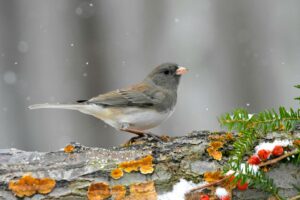
What is the best bird feeder for Dark-eyed Juncos?
Because juncos are primarily ground feeders they prefer platform feeders and trays close to the ground. A platform feeder with a large roof to keep out the snowy or rainy winter weather and keep seeds dry is ideal.
More often than not, though, juncos will feed on the ground under the feeders where seeds have spilled out.
Here is a platform feeder that would be attractive to Dark-eyed Juncos and other ground feeding sparrows and towhees.
These can be mounted on a pole or hung from a sturdy hook. Juncos will actually like them best placed low to the ground.
If you do put the feeder very low to the ground, keep them 10 feet from any bush where a cat may hide behind and pounce. Smaller platform feeders can be placed right on a deck railing or fence post.
If you want to take the do-it-yourself route, then juncos will eat from any kind of tray or saucer.
Such a tray should have good drainage to keep the seeds from soaking up water. The floor of such a feeder is best as a fine mesh or screen to allow good air flow. Then wet seeds can quickly dry out.
No seeds should remain more than a couple of days if wet to prevent mold and mildew. Replace wet seed with dry fresh seed.
Dark-eyed Juncos readily come to feeders. But to encourage them to find the feeders when they first arrive in fall or winter, spread a light scattering of seeds on bare ground or cement patio. But don’t put out so much so frequently that you are attracting rodents.
Juncos will also occasionally feed on suet blocks, especially if it includes some small seeds.
Feeding and foraging behavior
Juncos are primarily ground feeders. They hop and run on the ground, occasionally kicking over leaf litter to search for small weed seeds and invertebrates.
They also glean seeds from low standing plants by flying up and landing on the seed head and using their weight to “ride” the seed head to the ground.
They often mix with other sparrows in winter. They are frequently seen with Chipping Sparrows and White-throated Sparrows where their ranges overlap. Winter habitat includes road side edges lined with brush and bird feeders.
Winter feeding flocks have a definite pecking order. One male will be dominant over all others. In general, males dominate females, and females dominate younger birds. (source) In winter they feed in active twittering flocks on the ground, flashing their white outer tail feathers.
They feed in the open, but dive for cover at the first sign of danger. At this time they are more likely to flee up into low trees and the top of brush, rather than low down. They give smacking and twittering calls keeping an eye on any intruder.
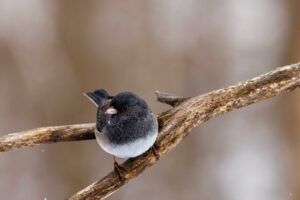
Water: Drinking and bathing
All birds need water to drink and to bathe. However, I haven’t noted juncos as frequently as some other birds at my bird baths. That may be because they spend more time on the ground and may take advantage of rain puddles and snow melt for those purposes. I’ve learned that they also drink dew off plants!
Rather than the typical bird bath, juncos may prefer something lower to the ground. Try placing shallow saucers on the ground filled with water. Try using the glazed saucers you place under clay pots to keep water from running out of your potted plants.
Because Dark-eyed Juncos move only to the edge of frozen ground in winter, they may benefit from heated bird baths. If you don’t have that available make sure you refill your birdbath with warm water every morning during freezing weather. Warm water should stay liquid for a couple of hours to provide all the birds with needed hydration.
Return to the overview of the Dark-eyed Junco.
Wrapping Up
The Dark-eyed Junco holds a special place in the hearts of many bird watchers for several reasons:
Charming personality:
- Lively and active: Juncos are energetic little birds, constantly hopping and scratching on the ground, flitting through bushes, and flashing their white tail feathers in flight, adding a delightful touch of movement to any scene.
- Tame and approachable: They readily visit feeders, often coming quite close to human observation, allowing for detailed study and appreciation of their features.
- Pleasant vocalizations: Juncos have a sweet, musical song, especially during breeding season, and their soft ticking calls are pleasant to hear amidst other bird sounds.
Adaptability and familiarity:
- Widespread: Found across a vast range of North America, from Alaska to Mexico and coast to coast, Juncos are familiar to birders in diverse locations, increasing their potential fan base.
- Year-round residents in many areas: In some regions, Juncos are present throughout the year, offering a constant, comforting presence in backyards and birding spots.
- Adaptation to different habitats: Whether in coniferous forests, open fields, or even suburban gardens, Juncos adjust to diverse settings, making them readily encountered by a wide range of people.
Visual appeal:
- Striking contrast: The sleek gray or slate-colored body of the Junco, contrasted with the pure white tail feathers, creates a visually striking and memorable look.
- Variety within the species: Different subspecies of Juncos exhibit subtle variations in plumage, beak color, and song, which adds an element of intrigue and keeps things interesting for dedicated observers.
- Uniqueness among sparrows: Compared to other sparrows, Juncos stand out with their larger size, bolder markings, and distinct tail flashes, making them visually more captivating.
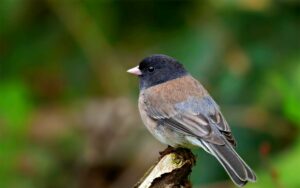
Frequently Asked Questions
How rare is a Dark-eyed Junco?
The Dark-eyed Junco is actually one of the most common bird species in North America and not rare at all!
Here are some facts to clarify its abundance:
- Population estimates: Some estimates suggest a staggering 630 million individuals across the continent.
- Widespread range: Juncos can be found from Alaska to Mexico and coast to coast, making them familiar to birders in diverse locations.
- Abundant in various habitats: From coniferous forests and open fields to suburban gardens, Juncos readily adapt to different settings, enhancing their chances of being encountered.
- Regularly observed: Many birdwatchers across North America see Juncos year-round or during specific seasons, further solidifying their common status.
What is the difference between a junco and a Dark-eyed Junco?
Actually, there isn’t a real difference between a junco and a Dark-eyed Junco!
“Junco” is a common name for a group of birds within the genus Junco, and the Dark-eyed Junco (Junco hyemalis) is the most widespread and well-known species within this group. In some contexts, “junco” may be used to refer to the Dark-eyed Junco specifically, but it can also encompass other Junco species like the Yellow-eyed Junco or the Pink-sided Junco.
So, depending on the context, “junco” and “Dark-eyed Junco” might be used interchangeably. If you encounter someone using the term “junco,” it’s always best to clarify which species they’re referring to, especially if you’re looking for specific information about their appearance or behavior.
Is a Dark-eyed Junco a sparrow?
Absolutely! The Dark-eyed Junco is indeed a sparrow. In fact, it belongs to the family Passerellidae, commonly known as the New World sparrows, which includes over 80 species found throughout North and South America.
Despite their distinct appearance with the contrasting gray body and white tail feathers, juncos share several key characteristics with other sparrows:
- Size and shape: Juncos are typically medium-sized sparrows, similar in size to a robin, with a rounded head, plump body, and a relatively long tail.
- Beak and feathers: They have a short, conical beak suitable for seed-eating, and their plumage is often streaked or patterned, similar to many other sparrows.
- Behavior: Juncos exhibit typical sparrow behaviors such as ground-scratching for food, hopping and flitting through bushes, and singing simple, melodic songs.
- Taxonomy: Scientific classification also confirms their sparrow status. The Dark-eyed Junco belongs to the genus Junco, which falls within the tribe Junconoeini, further placing them within the larger Passerellidae family of sparrows.
While some physical differences like the lack of streaking on their body set juncos apart from some other sparrows, their overall characteristics, behavior, and taxonomic relationships firmly establish them as members of the sparrow family. So, next time you see a Dark-eyed Junco hopping around, you can confidently call it a sparrow.



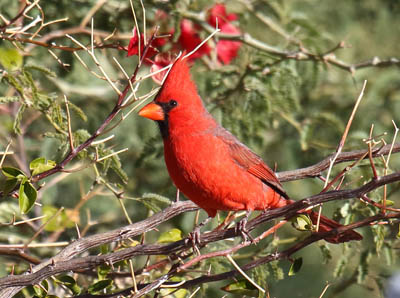
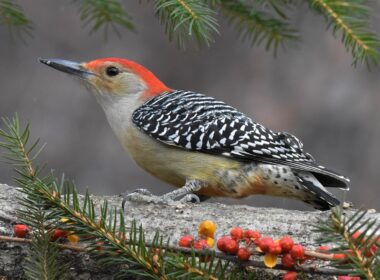
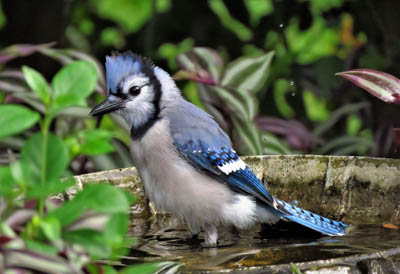
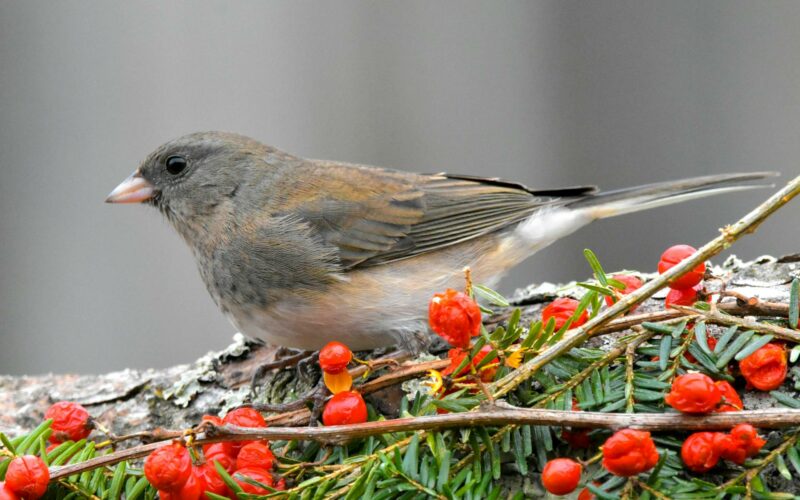
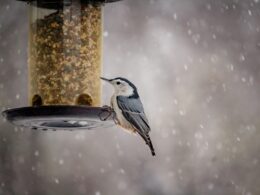
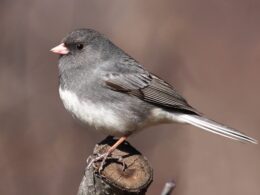
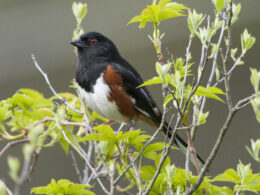
I have now ordered a platform feeder for my Juncos as I feel they are left out while others feast from tube feeders. Now I must order food.Your info was very helpful.
i found a junco and so I was worried about it but now I can take care of it this was very helpful now I can help her easily
I'm glad you found this helpful.
Is there a way to feed juncos without attracting rodents. Will they eat from any other feeders other than ground platform feeders
Juncos will feed from hanging tray feeders.
Also, reduce the amount of food you leave out overnight. Feed only enough so that the juncos eat it all by noon. Then the rodents won't have anything to eat at night.
Thanks for a clear and helpful article. My kids brought in a little junco they found on the ground. She was weak and had poor coordination. After 2 days of more care and attention than any wild bird would want, she seems strong enough to fly. We'll release her in an enclosed, protected courtyard so she can continue her recovery with easy access to seeds and free of predators.
A happy result!